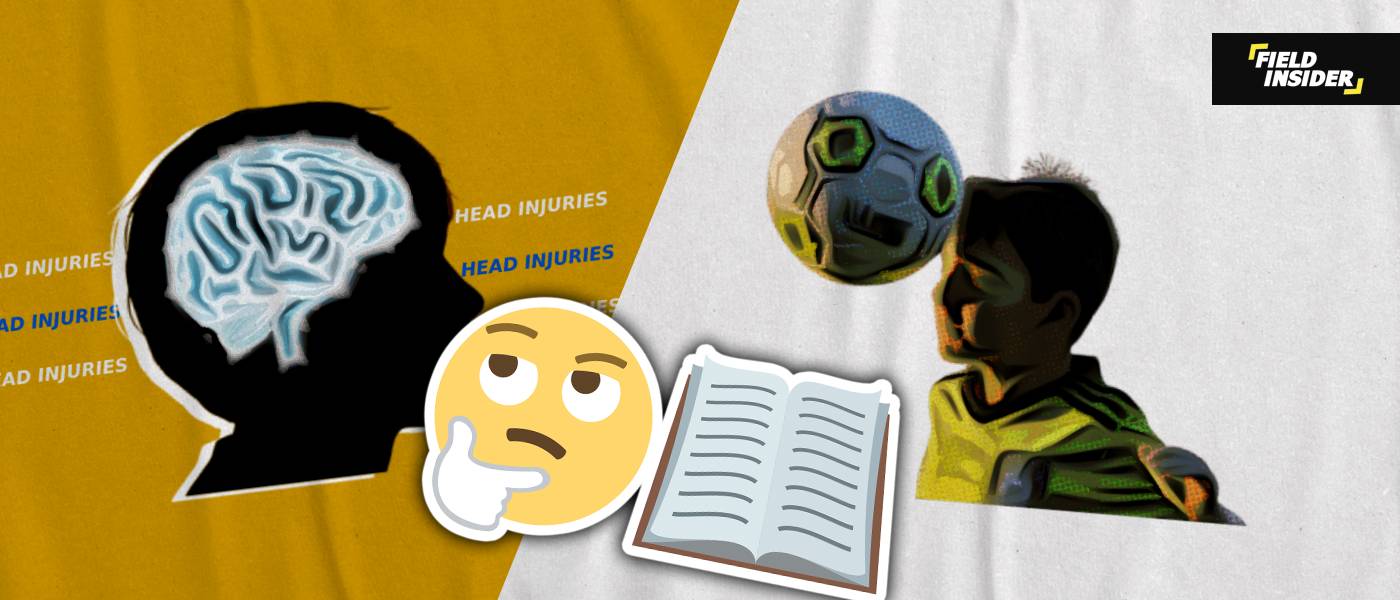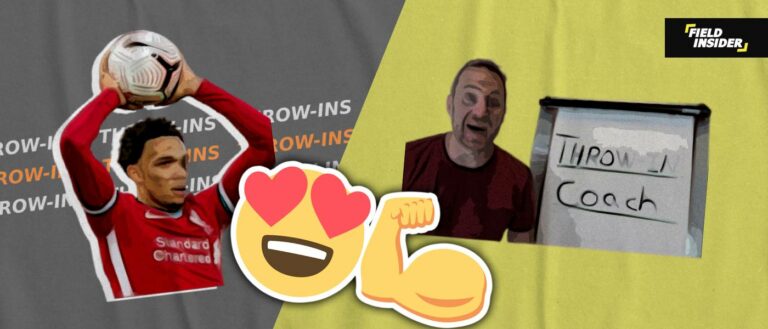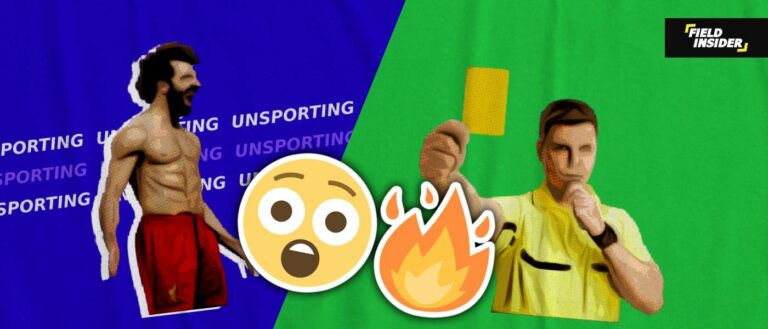Is Heading The Soccer Ball Dangerous For Young Kids? Deep Dive
In youth soccer, heading (the ball) is a common skill, but it comes with concerns about concussions. While soccer is generally low-risk for severe head injuries, concussions can happen, often linked to heading.
This risk is more significant during actual games. Factors such as biomechanics, less-developed technique, and the vulnerability of young brains contribute to this risk.
Associate professor in the Department of Family Medicine and UW head team physician John W. O’Kane M.D. suggests that there’s no evidence of permanent brain damage from youth soccer heading.
However, there is emerging data suggesting an increased risk of concussions. Addressing this concern is crucial as it directly impacts the health and well-being of our budding football stars.
Key Takeaways
| Topic | Details |
| Basics of Heading | Understanding the technique and its historical context. |
| Concerns for Kids | Why heading might pose risks for children’s development. |
| Research Insights | Studies highlighting the dangers and recommendations. |
| Head Injury Symptoms | Early diagnosis of head injuries in youth. |
| Coaching’s Role | Modifying rules and training for a safer experience. |
| Precautionary Measures | How youth football governing bodies are balancing the necessity of skill development with safety. |
What is Heading in Soccer?
Heading in soccer is a skill where players use their head to direct the ball, whether it’s to pass, clear, or score. Initially, the game of soccer was more grounded with short passes and dribbles.
However, as tactics and strategies evolved, so did the emphasis on aerial ball control, and heading became an integral part of the sport.

In a game, especially in formations like the 4-4-2 formation, heading plays a crucial role in both defensive and offensive strategies.
in-Game Heading Scenarios
| Passing | Heading is often used to pass the ball to a teammate during open play, especially when the ball is in the air. It requires precision and understanding between players to execute effective headed passes. |
| Clearances | Defenders frequently use headers to clear the ball away from dangerous areas, especially during crosses or corner kicks. The emphasis here is on height and distance to ensure that the ball is moved away from the goal area. |
| Scoring | Forwards and attacking players capitalize on crosses, free-kicks, and corner kicks to use headers as a tool for scoring goals. The ability to head the ball with power and direction towards the goal often results in spectacular goals. |
Are Kids at the Most Risk of Heading-Related Injuries?
Children’s brains, in their delicate developmental stage, are particularly susceptible to trauma.
The act of heading a soccer ball can introduce sudden forces that, combined with underdeveloped neck muscles typical of younger players, may heighten the risk of injuries, including concussions and potential long-term cognitive issues.
While a singular header might not cause immediate discernible harm, repeated impacts can accumulate, making the potential for harm greater over time.
Studies and Research
Several studies have delved into the impact of heading on young players. Most indicate that repeated heading can lead to concussions and even potential brain damage in worst-case scenarios.
In the study Comstock RD, Currie DW, Pierpoint LA, Grubenhoff JA, Fields SK. An Evidence-Based Discussion of Heading the Ball and Concussions in High School Soccer. JAMA Pediatr. 2015 Sep;169(9):830-7, analyzing data from 2005-2014 in US high schools, researchers examined concussions among high school athletes.
They found that 627 concussions occurred in girls (4.50 per 10,000 athlete exposures) and 442 in boys (2.78 per 10,000 athlete exposures).
Contact with another player was the primary cause of concussions for both genders, accounting for 68.8% in boys and 51.3% in girls.
Additionally, heading was the most common soccer-specific activity leading to concussions, responsible for 30.6% in boys and 25.3% in girls.
Overall, the study found relatively consistent concussion symptom patterns regardless of the injury mechanism.

What are Possible Symptoms of Common Head injuries?
The symptoms of a concussion vary depending on the severity of the injury and the individual affected. It is not always true that people who have suffered a concussion lose consciousness.
Headaches, memory loss, confusion, and dizziness are all common symptoms of a concussion.
Because of the memory loss, the player may not recall a specific match in which he suffered a concussion. However, it is usually only temporary and not permanent.
Sub Concussive Injuries
A subconcussive injury occurs when a person’s head is struck with strong force. Nonetheless, unlike a concussion, it is not severe enough to cause obvious problems. However, the injury does cause some cerebral damage.
chronic traumatic encephalopathy (CTE)
Over time, the accumulation of sub-concussive injuries can result in more serious harm. This type of depressing head injury is linked to chronic traumatic encephalopathy (CTE), a dangerous brain disorder.
When a person experiences both subconcussive cerebrum injuries and concussions over a long period of time, the risk of CTE increases.
CTE is still not yet fully understood. Numerous factors, such as genes and diet, may influence how head injury causes CTE. This entity, however, should be avoided. The side effects are also unique to each individual.
Early warning signs include impulsive behavior, memory problems, a decrease in attention span, and a decrease in self-control and ability to complete planned tasks.

Should kids Be heading the ball in soccer?
Considering the risks, many global soccer institutions recommend postponing the introduction of heading a soccer ball until early adolescence. During this phase, the child’s physical development might be better equipped to manage the forces involved.
If introduced, proper technique should be emphasized, and the frequency of headers during practice should be minimized.
Vigilance from coaches and parents is paramount; any signs of head-related injuries should be addressed immediately, ensuring the child’s health remains the primary focus in the sport.
In fact further research points to the importance of techniques and age-appropriateness. It’s recommended that heading be introduced gradually and with proper coaching techniques for safety.
The Role of Coaching and Education
A well-informed coach can make a world of difference. Ensuring that children understand the proper techniques and the importance of communication can prevent unnecessary risks.
Initiatives include using softer balls during training or limiting the frequency of heading drills. It’s also essential for parents to be aware and ensure they’re sending their kids to responsible soccer practices.
Training and Techniques of Heading The Soccer Ball
Heading is not just about using the head but involves the entire body. Proper technique requires:
- Body Positioning: Keeping the eyes on the ball, positioning the body in line with the ball’s trajectory, and ensuring a stable stance.
- Neck Strength: The power of a header often comes from the neck. Strengthening exercises can help players generate force during headers.
- Timing: This is crucial. Jumping too early or too late can result in a missed header. Players must learn to time their jumps perfectly.
- Safety: Given concerns about concussions and head injuries, it’s crucial for players to learn the proper technique. Using the forehead, rather than the top or side of the head, and avoiding clashes with opponents are essential safety considerations.
Instructions for Safely Heading the Soccer Ball:
- Be alert for the ball at all times.
- Keep your eyes open to anticipate its direction. Not seeing the ball can lead to unexpected impacts.
- Ensure your mouth is shut to avoid biting your tongue.
- Tuck in your chin, which helps in keeping your neck sturdy.
- Utilize your arms to maintain balance.
- Engage your legs, move towards the ball. Never just let it strike you.
- Aim to make contact with the ball using your forehead, as it’s the sturdiest part of your skull.
- Always follow through in the direction of the motion after making contact.
Is Heading the Ball Banned in Youth Soccer?
At the time of writing, research around this aspect of the game continues and as our understanding of the brain evolves, the rules and guidelines surrounding heading in youth soccer may also change.
The U.S. Soccer Federation’s Stance
In 2015, the U.S. Soccer Federation (USSF) announced new safety initiatives, one of which directly addressed the issue of heading in youth soccer.
Specifically, the federation banned heading for players 10 and younger and limited the amount of heading in practice for players between the ages of 11 and 13.
This decision was driven by concerns over concussions and their potential long-term implications on the young brain.
Global Perspective
Globally, attitudes towards heading in youth soccer vary. While the U.S. has taken a more conservative approach, not all countries have imposed similar restrictions.
However, given the increasing awareness about brain injuries in sports, more countries are beginning to review and assess their policies.
England, for instance, has also introduced guidelines
Renowned names in football have also advocated for such heading regulations, most notably Ryan Mason, whom unfortunately had to retire at 27 due to skull fracture, voiced his concern on the matter;
“If you have got a seven or eight-year-old heading a solid ball, and his brain and his bone in his skull isn’t fully developed, that could potentially be doing damage.”
“I don’t think kids should be heading real balls.”
Ryan Mason speaking to BBC Sport

What is the Suitable Age for a Kid to Begin Heading the Ball?
The appropriate age for children to start heading the ball in soccer has been the subject of much debate among coaches, parents, and medical professionals.
As we’ve already mentioned, many sports governing bodies around the world have been evaluating this issue, especially in light of growing concerns about concussions and their long-term effects on children. As a result, several soccer associations have implemented guidelines.
The suitable age can vary based on individual readiness, both physically and mentally. While some children might be prepared earlier, others may benefit from waiting.
The emphasis should be on ensuring that when children are introduced to heading, they are taught the correct technique, which can help mitigate potential risks.
Conclusion
As integral as heading is to the game, the safety of young athletes remains the priority. Continuous research, coupled with responsible coaching, ensures that youth soccer players can master the skill without compromising their health.
Awareness, from parents to players, is essential to strike the right balance between skill development and safety.
We at Field Insider strongly suggest that if any head injury is suspected, it’s crucial to immediately consult with a healthcare professional for an accurate diagnosis and appropriate medical care.








